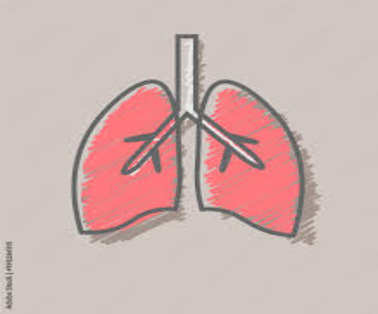India’s criminal law system has undergone a significant overhaul with the implementation of three new laws on July 1, 2024, replacing colonial-era statutes.
Key Highlights
- Core Legislative Changes:
- The Bharatiya Nyaya Sanhita (BNS) replaces the Indian Penal Code, 1860.
- The Bharatiya Nagarik Suraksha Sanhita (BNSS) replaces the Code of Criminal Procedure, 1973.
- The Bharatiya Sakshya Adhiniyam (BSA) replaces the Indian Evidence Act, 1872.
- Comprehensive Criminal Justice Reform: These new criminal laws collectively govern the entire criminal justice jurisprudence, from defining penal offenses and prescribing investigation processes to evidence gathering and trial procedures.
- Justice-Focused Approach & Technological Integration: The primary aim of these reforms is to shift from punitive colonial-era punishments to a justice-focused approach, integrating technological advancements into police investigations and court proceedings to enhance the efficiency of the criminal justice system.
- New Offenses & Enhanced Penalties: The new laws introduce specific provisions for contemporary crimes, including:
- Terrorism
- Mob lynching
- Organized crime
- Enhanced punishments for crimes against women and children.
Bharatiya Nyaya Sanhita (BNS) – Key Changes in Penal Provisions:
- Streamlined Structure: Reduced from 511 sections to 358 sections.
- Expanded Scope:
- 20 new crimes added.
- Imprisonment sentences increased for 33 crimes.
- Fine amounts increased for 83 crimes.
- Mandatory Minimum Punishments: Introduced for 23 crimes.
- Community Service: Introduced as a penalty for 6 crimes.
- 19 sections removed.
Bharatiya Nagarik Suraksha Sanhita (BNSS) – Procedural Reforms in Criminal Law:
- Expanded Structure: Increased from 484 sections to 531 sections.
- Extensive Amendments:
- 177 provisions changed.
- 9 new sections and 39 new sub-sections added.
- 44 new provisions added.
- Timelines for Procedures: Timelines introduced in 35 sections to expedite the criminal justice system.
- Audio-Video Provisions: Mandated in 35 places, especially for search, seizure, and forensic examinations in serious crimes.
- 14 sections removed.
Bharatiya Sakshya Adhiniyam (BSA) – Evidence Law Modernization:
- Updated Structure: Increased from 167 provisions to 170 provisions.
- Key Changes:
- 24 provisions changed.
- 2 new provisions and 6 sub-provisions added.
- Modernizing Evidence Admissibility: Removes colonial references and widens the ambit of electronic records admissible as evidence, including emails, server logs, smartphones, SMS, websites, and locational evidence.
- Digital Records Equivalence: Electronic or digital records now hold the same legal effect as paper records.
- 6 provisions removed.
Key Features of the New Criminal Laws:
- Bharatiya Nyaya Sanhita (BNS):
- Abolition of Sedition: Replaced with penalties for activities threatening India’s unity, integrity, and sovereignty (e.g., secession, armed rebellion, separatist activities).
- Defined Terrorism & Organized Crime: Clearly defines these offenses and imposes appropriate penalties.
- Enhanced Penalties for Sexual Offenses: Includes death penalty for gang rape of women below 18 years and penalizes sexual intercourse through deceitful means (up to 10 years imprisonment and fine).
- Bharatiya Nagarik Suraksha Sanhita (BNSS):
- Electronic Proceedings: All trials, inquiries, and proceedings can now be held in electronic mode.
- Mandatory Forensic Investigation: Required for offenses punishable with at least seven years imprisonment.
- Strict Timelines:
- Medical reports for rape victims within seven days.
- Judgment within 30 days of argument completion (extendable to 60 days).
- Victim to be informed of investigation progress within 90 days.
- Framing of charges by sessions court within 60 days of first hearing.
- Expanded Police Custody: Detention in police custody expanded from 15 days to up to 90 days (overall maximum period remains).
- Bharatiya Sakshya Adhiniyam (BSA):
- Electronic Evidence: Expands the definition of “documents” to explicitly include various electronic and digital records, making them admissible.
- Removes provisions related to telegraphic messages.
Transition and Adaptation in the Criminal Justice System:
- Concurrent Operation: IPC and CrPC will run concurrently with the new laws for pending cases and crimes committed before July 1, 2024, but reported later.
- State Amendments: States have the autonomy to amend certain provisions of the BNSS.
- Future BNS Amendments: Anticipated amendments to BNS to include sexual crimes against men and transgender persons.
- Digital FIRs: FIRs can now be filed online via CCTNS, enabling e-FIRs and zero FIRs in multiple languages.
- Technological Integration:
- NCRB has made 23 functional modifications to CCTNS for investigation, trial, and court proceedings.
- BNSS mandates audio-video recording of search, seizure, and forensic examinations for serious crimes.
- Home Ministry testing eSakshya mobile app for evidence recording; states developing their own systems.
- Training & Awareness:
- Union government providing training and support for a smooth transition.
- CCTNS software updated for multi-language support.
- Police station Officer-in-Charge to organize awareness programs on new criminal laws.
- Discussions and analyses covered via Doordarshan, Akashvani, and social media.
- Mandatory inclusion of course modules in schools and higher education institutes.
Significance of the New Criminal Laws:
- Decolonization of Laws: Aims to remove signs of slavery and replace British-era laws (designed for punishment) with those focused on justice.
- Citizen Rights & Justice: The core purpose is to protect constitutional rights and ensure justice for Indian citizens.
- Transparency & Efficiency: New provisions designed to enhance the transparency and efficiency of the criminal justice system.
- Quicker Justice: Provision for justice within a maximum of 3 years.
Issues and Concerns in the New Acts:
- Lack of Public Disclosure: Stakeholder inputs and the MHA’s Committee For Reforms In Criminal Laws (CRCL) report have not been made public.
- Increased Suspicion: The framework is perceived by some as viewing citizens with increased suspicion, potentially creating an adversarial state-citizen relationship.
- Expanded Police Power (BNSS): Concerns that expanded police custody periods under BNSS continue colonial-era powers rather than undoing them.
- Police & Prison Reform: Despite aiming for decolonization, the Acts provide no specific scope for the reform of police and prison systems, often considered relics of colonization.
To Download Monthly Current Affairs PDF Click here
Click here to get a free demo
Discover all about CLAT Exam



